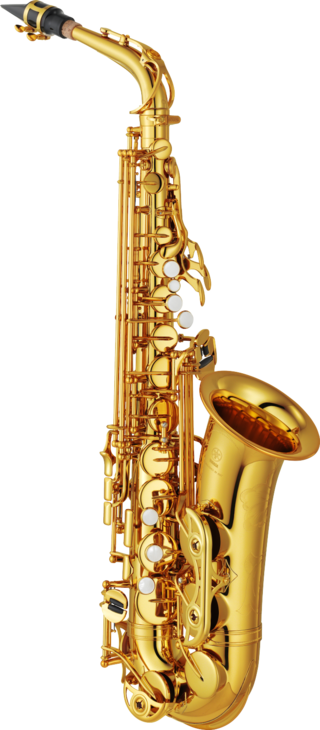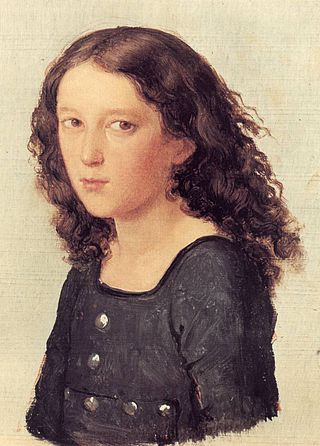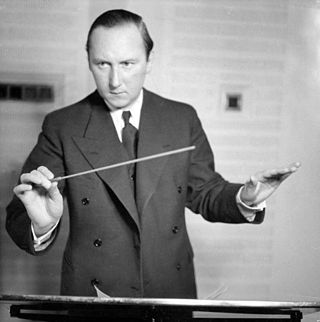Related Research Articles
Marcel Mule was a French classical saxophonist. He was known worldwide as one of the great classical saxophonists, and many pieces were written for him, premiered by him, and arranged by him. Many of these pieces have become staples in the classical saxophone repertoire. He is considered to be the founder of the French Saxophone School and the most representative saxophone soloist of his time, being a fundamental figure in the development of the instrument.

The Piano Concerto in A minor, Op. 54, by the German Romantic composer Robert Schumann was completed in 1845 and is the composer's only piano concerto. The complete work was premiered in Dresden on 4 December 1845. It is one of the most widely performed and recorded piano concertos from the Romantic period.

The Violin Concerto in D major, Op. 35 was the only concerto for violin composed by Pyotr Ilyich Tchaikovsky. Composed in 1878, it is one of the best-known violin concertos.

The alto saxophone is a member of the saxophone family of woodwind instruments. Saxophones were invented by Belgian instrument designer Adolphe Sax in the 1840s and patented in 1846. The alto saxophone is pitched in the key of E♭, smaller than the B♭ tenor but larger than the B♭ soprano. It is the most common saxophone and is used in popular music, concert bands, chamber music, solo repertoire, military bands, marching bands, pep bands, carnatic music, and jazz.
Concerto in F is a composition by George Gershwin for solo piano and orchestra which is closer in form to a traditional concerto than his earlier jazz-influenced Rhapsody in Blue. It was written in 1925 on a commission from the conductor and director Walter Damrosch. It is just over half an hour long.

The Piano Concerto No. 20 in D minor, K. 466, was composed by Wolfgang Amadeus Mozart in 1785. The first performance took place at the Mehlgrube Casino in Vienna on 11 February 1785, with the composer as the soloist.

Felix Mendelssohn's Violin Concerto in E minor, Op. 64, MWV O 14, is his last concerto. Well received at its premiere, it has remained among the most prominent and highly-regarded violin concertos. It holds a central place in the violin repertoire and has developed a reputation as an essential concerto for all aspiring concert violinists to master, and usually one of the first Romantic era concertos they learn. A typical performance lasts just under half an hour.

The Piano Concerto No. 1 in B♭ minor, Op. 23, was composed by Pyotr Ilyich Tchaikovsky between November 1874 and February 1875. It was revised in 1879 and in 1888. It was first performed on October 25, 1875, in Boston by Hans von Bülow after Tchaikovsky's desired pianist, Nikolai Rubinstein, criticised the piece. Rubinstein later withdrew his criticism and became a fervent champion of the work. It is one of the most popular of Tchaikovsky's compositions and among the best known of all piano concerti.

The Piano Concerto No. 21 in C major, K. 467, was completed on 9 March 1785 by Wolfgang Amadeus Mozart, four weeks after the completion of the previous D minor concerto, K. 466.
Lawrence S. Gwozdz is an American classical saxophonist, composer, and former professor of saxophone at The University of Southern Mississippi. His successor is Dr. Dannel Espinoza.

Ludwig van Beethoven's Piano Concerto No. 1 in C major, Op. 15, was written in 1795, then revised in 1800. It was possibly first performed by Beethoven at his first public concert in Vienna on 29 March 1795. It was first published in 1801 in Vienna with dedication to his pupil Princess Anna Louise Barbara Odescalchi, known to her friends as "Babette".

Sigurd Manfred Raschèr was an American saxophonist born in Germany. He became an important figure in the development of the 20th century repertoire for the classical saxophone.

Piano Concerto No. 2 in F major, Op. 102, by Dmitri Shostakovich was composed in 1957 for the 19th birthday of his son Maxim, who premiered the piece during his graduation concert at the Moscow Conservatory. It contains many similar elements to Shostakovich's Concertino for Two Pianos: both works were written to be accessible for developing young pianists. It is an uncharacteristically cheerful piece, much more so than most of Shostakovich's works.

A saxophone quartet is a musical ensemble composed of four saxophones, typically soprano, alto, tenor and baritone saxophones. Different saxophone family members are employed to provide a larger range and a variety of tone colours. Other arrangements of instruments also exist, but are rarer. A piece of music composed for such an ensemble can also itself be referred to as a saxophone quartet.
Carl Maria von Weber wrote his Clarinet Concerto No. 1 in F minor, Op. 73 for the clarinettist Heinrich Bärmann in 1811. The piece is highly regarded in the instrument's repertoire. It is written for clarinet in B♭. The work consists of three movements in the form of fast, slow, fast. It was premiered in Munich on 13 June 1811, with Maximilian I Joseph of Bavaria in attendance.
Violin Concerto No. 4 in D minor, MS 60, is a concerto composed by Niccolò Paganini in the fall of 1829.

The Concerto for Piano, Violin, and Strings in D minor, MWV O4, also known as the Double Concerto in D minor, was written in 1823 by Felix Mendelssohn when he was 14 years old. This piece is Mendelssohn's fourth work for a solo instrument with orchestral accompaniment, preceded by a Largo and Allegro in D minor for Piano and Strings MWV O1, the Piano Concerto in A Minor MWV O2, and the Violin Concerto in D minor MWV O3. Mendelssohn composed the work to be performed for a private concert on May 25, 1823 at the Mendelssohn home in Berlin with his violin teacher and friend, Eduard Rietz. Following this private performance, Mendelssohn revised the scoring, adding winds and timpani and is possibly the first work in which Mendelssohn used winds and timpani in a large work. A public performance was given on July 3, 1823 at the Berlin Schauspielhaus. Like the A minor piano concerto (1822), it remained unpublished during Mendelssohn's lifetime and it wasn't until 1999 when a critical edition of the piece was available.
The Piano Concerto No. 2 in D minor, Op. 23 by Edward MacDowell was completed in late 1885. Although some obvious similarities with Edvard Grieg's, Camille Saint-Saëns's and Franz Liszt's concertos have often been stated, MacDowell’s composition proves to be quite original, at least compared to his First Concerto. It was the first major piano concerto written by an American. It was also the only large-scale composition by MacDowell to remain in standard repertoire.

Fantasia for saxophone, three horns, and strings, W. 490, is a concertante work in three movements by the Brazilian composer Heitor Villa-Lobos, written in 1948. A performance of it lasts approximately ten minutes.

The Saxophone Concerto, Op. 14, is a three-movement concertante composition for alto saxophone and string orchestra written in 1934 by the Swedish composer Lars-Erik Larsson. The piece premiered on 27 November 1934 in Norrköping, Sweden, with Tord Benner conducting the Norrköping Orchestral Association. The soloist was the German-born American virtuoso Sigurd Raschèr, its dedicatee, whom Larsson had consulted during the compositional process; as such, the concerto incorporated several Raschèr's pioneering techniques—"highly personal tricks and devices". Because the Saxophone Concerto proved too difficult for most soloists, Larsson "simplified" it in the early 1980s to make it more accessible.
References
- 1 2 3 Sobchenko, André (September 1997). "Letters From Glazunov "The Saxophone Concerto Years"" (PDF). Saxophone Journal. dornpub.com. Archived from the original (PDF) on 15 February 2020. Retrieved 31 August 2012.
- ↑ Rousseau, Eugene. Marcel Mule : sa vie et le saxophone. Shell Lake, 1982.